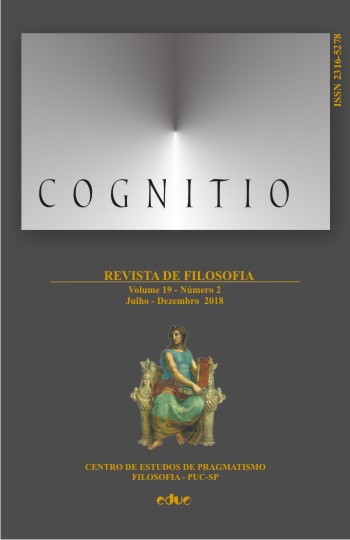The genesis of the creative experience in C. S. Peirce
DOI:
https://doi.org/10.23925/2316-5278.2018v19i2p220-226Keywords:
Abduction, Creativity, Experience, Gesture, Perception,Abstract
The aim of this paper is to show the relationship between perceptive experience and abductive reasoning in C. S. Peirce. Furthermore, I present abduction as a logical, practical and creative expression capable of introducing novelty in the realm of knowledge, through a system of graphical signs.The Peircean notion of experience is related with that of an interpretative and creative praxis, that is not limited to receiving or registering pre-constituted data passively. In this sense, abduction is that living logical habit which explains the perceived world as a particular case of a conceivable world, where a general rule or hypothesis is effective. I will present abduction as a type of reasoning that infers the cause from the effect, the antecedent from the consequent, the general order from an “extra-ordinary” and particular perceived fact.Abduction not only devises a singular fact, but it makes the fact visible within a new context of possible relationships. Hence, when we see a figure, we don’t really see a mere figure but a figure “as if” it was the perceived result of a possible general system of relationships. The hand gesture gives existence to the figure and makes it visible for us, because it reveals those relationships that constitute the context of the interpretation of the figure. In this respect, the graphical gesture is that practical accomplishment that allows a possible topological interpretation of the actual perceived world.Downloads
Published
2019-02-01
How to Cite
Ballabio, A. (2019). The genesis of the creative experience in C. S. Peirce. Cognitio: Revista De Filosofia, 19(2), 220–226. https://doi.org/10.23925/2316-5278.2018v19i2p220-226
Issue
Section
Cognitio Papers









